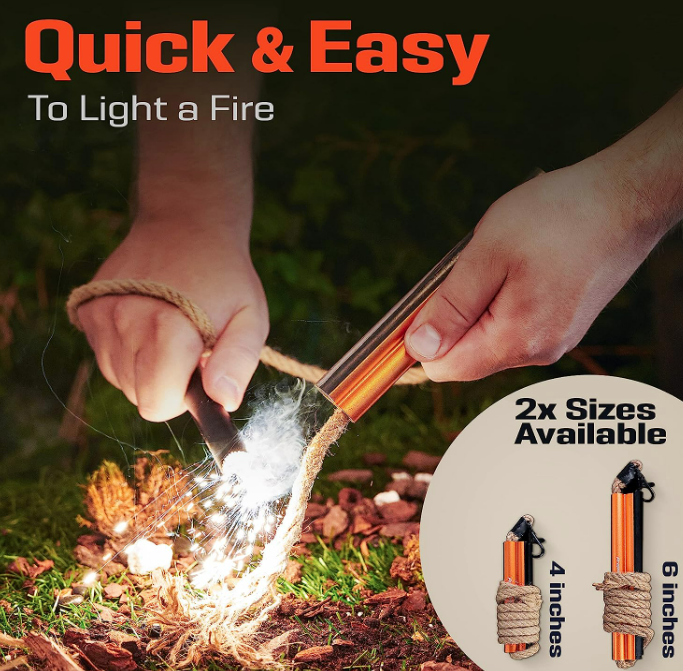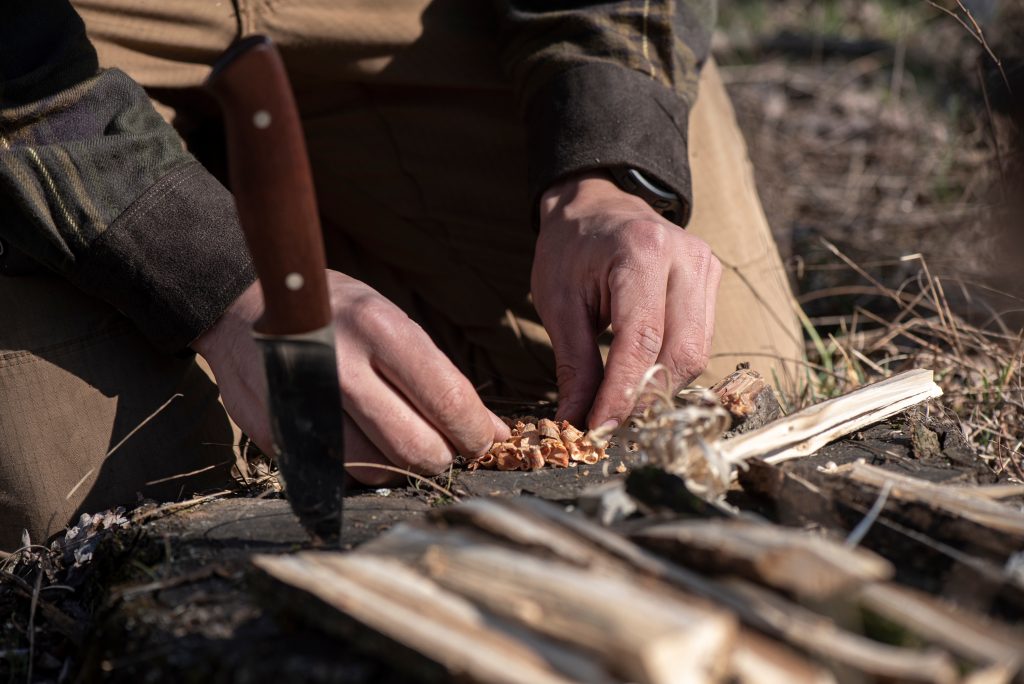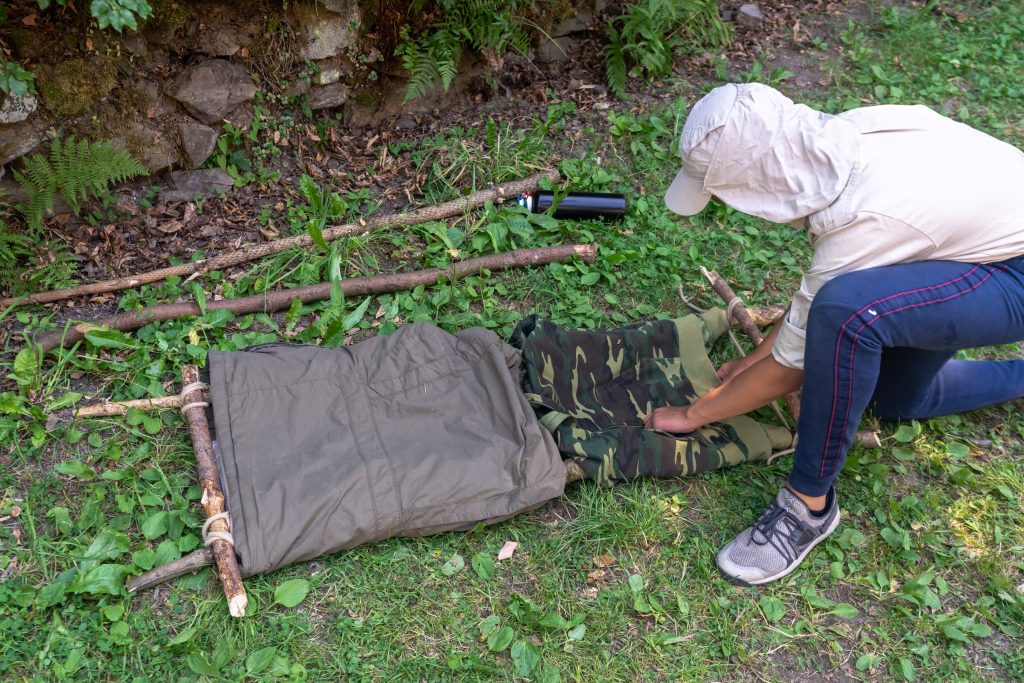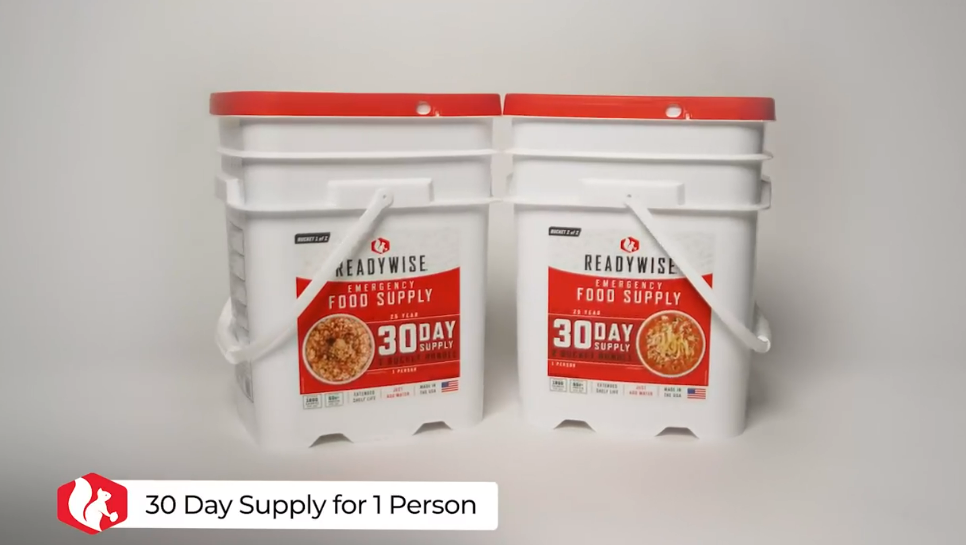In the realm of outdoor adventures and survival scenarios, having a reliable fire-starting tool can mean the difference between warmth, nourishment, and safety, or discomfort, hunger, and vulnerability. Fire starter sticks have emerged as a popular choice among outdoor enthusiasts due to their convenience, effectiveness, and portability. Let’s now delve into the world of fire starter sticks, exploring their features, benefits, and various applications in a survival setting.
Understanding Fire Starter Sticks
Fire starter sticks are compact, lightweight devices designed to facilitate the ignition of a fire in any environment. They are composed of a highly flammable material, such as wax, and are typically bundled together, providing an extended burning time. With their simple design and reliable functionality, fire starter sticks have become an essential tool for campers, hikers, preppers, and survivalists alike.

Benefits of Fire Starter Sticks
2.1. Portability: Fire starter sticks are compact and lightweight, making them easy to carry in backpacks, pockets, or survival kits without adding excessive bulk or weight.
2.2. Waterproof: Many fire starter sticks are designed to be waterproof or water-resistant, ensuring reliable performance even in wet or damp conditions.
2.3. Long Shelf Life: Unlike traditional matches or lighters that may deteriorate over time, fire starter sticks often have a long shelf life, providing a dependable ignition source in emergencies or during extended outdoor trips.
2.4. Versatility: Fire starter sticks can be used to ignite various fuel sources, including wood, charcoal, and dry grass, allowing users to start a fire for cooking, warmth, or signaling purposes.
How to Use Fire Starter Sticks
Using fire starter sticks is a straightforward process that requires minimal effort. Here’s a step-by-step guide to effectively use fire starter sticks in a survival setting:
3.1. Gather tinder: Collect dry and easily ignitable materials such as dry leaves, twigs, or newspaper to serve as tinder for your fire.
3.2. Create a fire lay: Arrange your kindling and fuel wood in a way that promotes airflow and allows the fire to build steadily.
3.3. Position the fire starter stick: Place the fire starter stick securely within the fire lay, making sure it is in direct contact with the tinder.
3.4. Ignite the fire starter stick: Use a match, lighter, or another ignition source to light the fire starter stick. The highly flammable material will catch fire quickly.
3.5. Build the fire: As the fire starter stick ignites the tinder, gradually add more kindling and fuel wood to build the fire’s intensity.
3.6. Maintain the fire: Once the fire is established, continue adding fuel to sustain it as needed for cooking, warmth, or signaling purposes.

Survival Applications of Fire Starter Sticks
4.1. Emergency Preparedness: Fire starter sticks are an essential component of any survival kit or bug-out bag. They offer a reliable ignition source for starting fires in emergency situations, ensuring warmth, protection, and the ability to purify water and cook food.
4.2. Wilderness Survival: When stranded or lost in the wilderness, fire starter sticks become a lifeline. They allow you to create a fire quickly, providing warmth, deterring wildlife, and signaling for rescue.
4.3. Cooking and Water Purification: Fire starter sticks enable you to cook food, sterilize water, and make it safe for consumption in the absence of modern amenities
Fire Starter Stick Considerations
When choosing fire starter sticks for your survival needs, there are a few factors to consider:
5.1. Quality and Reliability: Opt for reputable brands known for producing high-quality fire starter sticks that ignite easily and burn consistently.
5.2. Weather Resistance: Look for fire starter sticks that are waterproof or water-resistant to ensure reliable performance in adverse weather conditions.
5.3. Burn Time: Consider the burn time of the fire starter sticks. Longer burn times provide a larger window for starting and maintaining a fire.
5.4. Quantity: Evaluate the number of fire starter sticks included in a pack or container. Having multiple sticks can be advantageous in prolonged survival scenarios.
5.5. Additional Features: Some fire starter sticks come with extra features such as built-in flint or signaling capabilities, which can be valuable in certain survival situations.

Safety Precautions
While fire starter sticks are relatively safe to use, it’s essential to exercise caution during ignition and fire management. Follow these safety precautions:
6.1. Choose a suitable location for your fire, ensuring it is away from flammable materials and in compliance with local regulations.
6.2. Never leave a fire unattended and ensure it is fully extinguished before leaving the area.
6.3. Keep a source of water or fire extinguisher nearby in case of emergencies.
6.4. Use fire starter sticks in a well-ventilated area to avoid excessive smoke inhalation.
6.5. Educate yourself on fire safety principles and techniques before venturing into outdoor environments.
Fire starter sticks have revolutionized the way we approach fire ignition in survival settings. With their portability, reliability, and ease of use, they have become a must-have tool for outdoor enthusiasts and those preparing for emergencies. By understanding their benefits, learning how to use them effectively, and considering safety precautions, you can harness the power of fire starter sticks to ensure your survival and enhance your outdoor experiences.
Incorporating fire starter sticks into your survival gear arsenal equips you with the ability to ignite a fire quickly, sustain it for various purposes, and stay prepared in challenging situations. So, whether you’re embarking on a wilderness adventure or stocking your emergency kit, fire starter sticks are an invaluable asset that can make a significant difference when it matters most. Stay safe, stay prepared, and let the flames of resilience guide your way.















